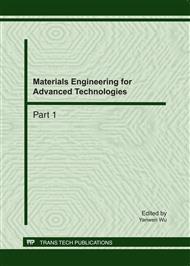p.550
p.556
p.560
p.568
p.574
p.580
p.585
p.590
p.595
Droplet Generation and Piezoceramic Actuation of a Jetting Inker
Abstract:
To reveal the jetting of fine drops, model of 2-phase flow between gas and liquid is offered based on volume of fluid method. Numerical simulation is launched for the droplet generation through narrow nozzle, and key factors are discussed. Aiming at the ink marking of defective dies in IC production, a jetting inker driven by piezoceramic stacks is developed. The actuation properties are derived; waveform of induced pressure at nozzle entrance is estimated, which coincides the numerical results. Performance of ink dot jetting is evaluated and simulation results are verified.
Info:
Periodical:
Pages:
574-579
Citation:
Online since:
June 2011
Price:
Сopyright:
© 2011 Trans Tech Publications Ltd. All Rights Reserved
Share:
Citation:


